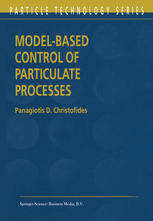

Most ebook files are in PDF format, so you can easily read them using various software such as Foxit Reader or directly on the Google Chrome browser.
Some ebook files are released by publishers in other formats such as .awz, .mobi, .epub, .fb2, etc. You may need to install specific software to read these formats on mobile/PC, such as Calibre.
Please read the tutorial at this link: https://ebookbell.com/faq
We offer FREE conversion to the popular formats you request; however, this may take some time. Therefore, right after payment, please email us, and we will try to provide the service as quickly as possible.
For some exceptional file formats or broken links (if any), please refrain from opening any disputes. Instead, email us first, and we will try to assist within a maximum of 6 hours.
EbookBell Team

0.0
0 reviewsParticulate processes are characterized by the co-presence of a contin uous phase and a dispersed (particulate) phase, and are widely used in industry for the manufacturing of many high-value products. Examples include the crystallization of proteins for pharmaceutical applications, the emulsion polymerization reactors for the production of latex, the aerosol synthesis of titania powder used in the production of white pig ments, and the thermal spray processing of nanostructured coatings. It is now well understood that the physico-chemical and mechanical properties of materials made with particulates depend heavily on the characteristics of the corresponding particle size distribution. This fact, together with recent advances in dynamics of infinite-dimensional sys tems and nonlinear control theory, has motivated extensive research on model-based control of particulate processes using population balances to achieve tight control of particle size distributions. This book - the first of its kind - presents general methods for the synthesis of nonlinear, robust and constrained feedback controllers for broad classes of particulate process models and illustrates their applica tions to industrially-important crystallization, aerosol and thermal spray processes. The controllers use a finite number of measurement sensors and control actuators to achieve stabilization of the closed-loop system, output tracking, attenuation of the effect of model uncertainty and han dling of actuator saturation.